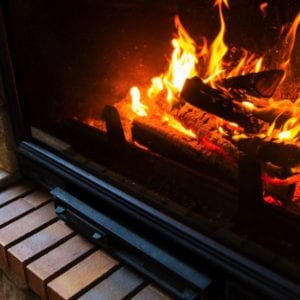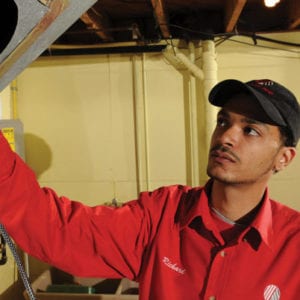No Heat? What to Check Before You Call
High on the list of the worst things that can happen in winter is having no heat. This is especially so in Canada, where our winter season is so cold, a house can become frigid in almost no time.
Let’s say the awful has indeed happened: your furnace has conked out, leaving you with no heat. Here’s what to check before calling a certified technician.
1. Is the Power On?
Let’s start with the most basic possibility for an outage: no power. Even though the power seems to be on in your home, a circuit breaker could have tripped and cut off the electricity to your furnace. If the problem continues, there may be an issue with your electrical wiring or the furnace.
If there are no issues with the electrical box, check to make sure the furnace’s power switch is set to ON. Also, make sure your gas valve is in the open position.
2. Check the Thermostat
It’s possible your furnace is not on because it doesn’t need to be. If someone has changed the thermostat setting, that can cause the unit to turn off because your home is already at the desired level of heat. Make sure it is set above the home’s current temperature.
Also, programmable thermostats often run on battery power. If the batteries are weak or dead, it will not function properly.
3. Check for Blockage
Modern high-efficiency furnaces have their fresh air intake and exhaust located outside the home, where it’s possible for snow and ice, leaves, bushes, vegetation, and windblown debris to block the pipes. These blockages will cause the furnace’s sensors to shut it down. Make sure your intake faces downward as this helps to reduce the possibility of blockages.
When you are back inside, check the condensate tubing for blockages. Condensation produced by the furnace drains off to ensure proper operation. If a blockage occurs, condensation will back up and the unit will turn off.
4. Check the Filter
Your furnace has an air filter that should be changed every 10 to 12 weeks. It prevents the intrusion of dust, hair, pet dander and other substances that would impede the unit’s efficiency. However, the furnace filter can only do so much before it gets clogged. When that happens, it can greatly reduce the amount of air going into the unit. The furnace can start to overheat and shut down as a precautionary measure.
A filthy filter can also cause soot to accumulate on the heat exchange. This can amplify the problem and will eventually even shorten the furnace’s lifespan. Fortunately, you can install an air flow gauge that will warn you when it is time to replace the filter.
5. Check the Access Door
Have you recently opened your furnace? As a safety measure, the furnace turns off whenever you open the access door. If it is still open, even a sliver, the safety switch inside will prevent operation. Fully close the door and ensure the latch is in place.
Have you run through this list and still do not have an active furnace? Give us a call and we will immediately dispatch one of our home comfort professionals to get it back online. Our 4 Hour Emergency Service Promise is available 24 hours a day, seven days a week. We will also be happy to give your furnace an annual check-up to help ensure you never suffer an interruption in service.
Image: svl861






